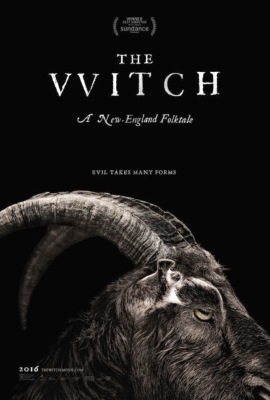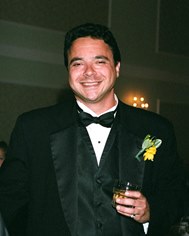 Robert Eggers won the directing award at last year’s Sundance film festival for his first feature “The Witch,” subtitled “a New England folktale,” and it certainly succeeds in being one of those classic spook stories you’d hear around a campfire. Of course, by faithfully capturing the atmosphere of the 17th Century and using Old English dialogue, the spell Eggers casts on you may be more akin to the Sandman if you were someone who felt sluggish trying to decipher Shakespeare plays in English class- “The Witch” comes off as a very dry art film. However, its classic horror structure will win you over- much like a Shakespeare play, you gain an appreciation for “The Witch’s” symbolically scary story long after it’s over.
Robert Eggers won the directing award at last year’s Sundance film festival for his first feature “The Witch,” subtitled “a New England folktale,” and it certainly succeeds in being one of those classic spook stories you’d hear around a campfire. Of course, by faithfully capturing the atmosphere of the 17th Century and using Old English dialogue, the spell Eggers casts on you may be more akin to the Sandman if you were someone who felt sluggish trying to decipher Shakespeare plays in English class- “The Witch” comes off as a very dry art film. However, its classic horror structure will win you over- much like a Shakespeare play, you gain an appreciation for “The Witch’s” symbolically scary story long after it’s over.
The story is a simple one- a 1630’s Puritan family is ostracized by their village when their headstrong patriarch William (Ralph Ineson) will not conform to “common law” and is forced to leave the village’s gated confines by wagon toward the wooded mountains beyond. With his wife Katherine (Kate Dickie) and five children in tow, William quickly builds a house and begins growing corn. As the corn crops begin to fail, more horrors await the family. When their oldest daughter Thomasin (Anya Taylor-Joy) takes her infant brother Samuel out toward the woods and lays him down for an amusing game of peek-a-boo, the amusement ends when Samuel vanishes while Thomasin’s eyes are covered. A fruitless search for Samuel, the dying crops, and other successive setbacks and circumstances allow for a worse seed to germinate- the family’s suspicion that Thomasin could be a witch.
Writer/director Eggers road to Hell is full of signposts that allow the audience to grasp what’s easily the scariest concept in any horror movie: evil invading everyday life. Allowing us to glimpse into the woods beyond the family farm, Eggers shows that these woods are truly dark and deep. Even animals creepily factor into the calamities: when William and son Caleb hunt for food to replace their dying crops, William’s gun misfires as the rabbit he’s trying to shoot stares them down. When the rabbit reappears later in the film, its stare (coupled with the stares from the family’s goat Black Phillip) has all of the eerie recall of that Rottweiler from “The Omen.” Is there something behind the animals’ gazes or have we too have become infected with the paranoia that’s playing out?
Being caught up in this chaos is “The Witch’s” strength and, while its tone and style may feel like a cross between “The Blair Witch Project” and “The Crucible,” the film reminded me most of 1973’s cult horror classic “The Wicker Man.” “Wicker Man” is mostly remembered for its surprise shock ending, and “The Witch” has that same fantastical finale when all is revealed. However, it’s the identification with both films’ leads that anchors our interest: just as we tried to outmaneuver “Wicker Man’s” pitfalls along with Edward Woodward and found we couldn’t see the final one, we share in Taylor-Joy’s trepidation as “The Witch’s” Thomasin- a girl wearily crossing over the threshold of womanhood as the victim of circumstance or as the unwitting victim to an awaiting evil spirit.
Grounded in classic horror, “The Witch” is impressive. Though its cackle may be dry, its successful intent to scare is there.
